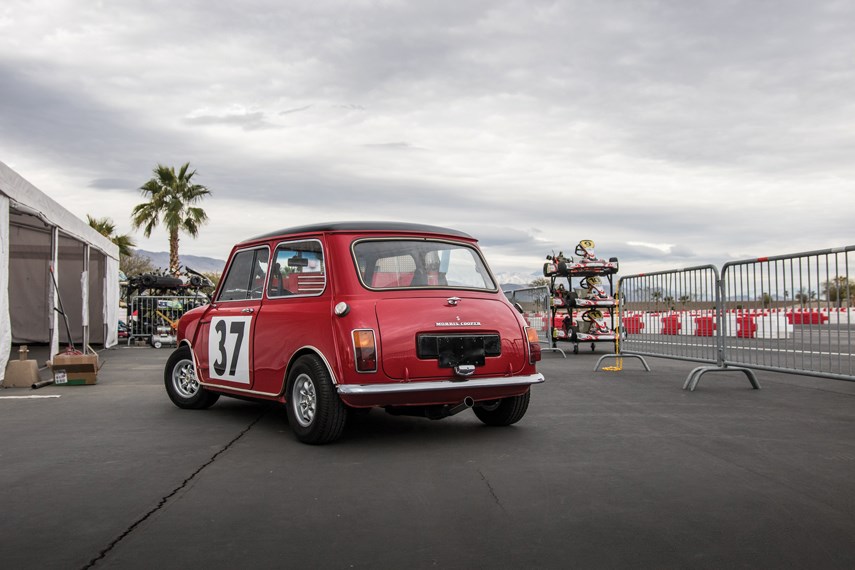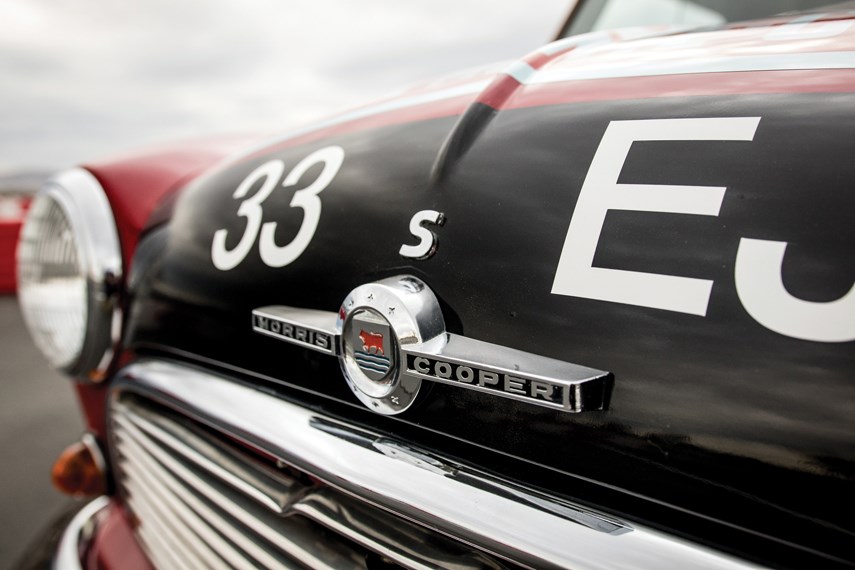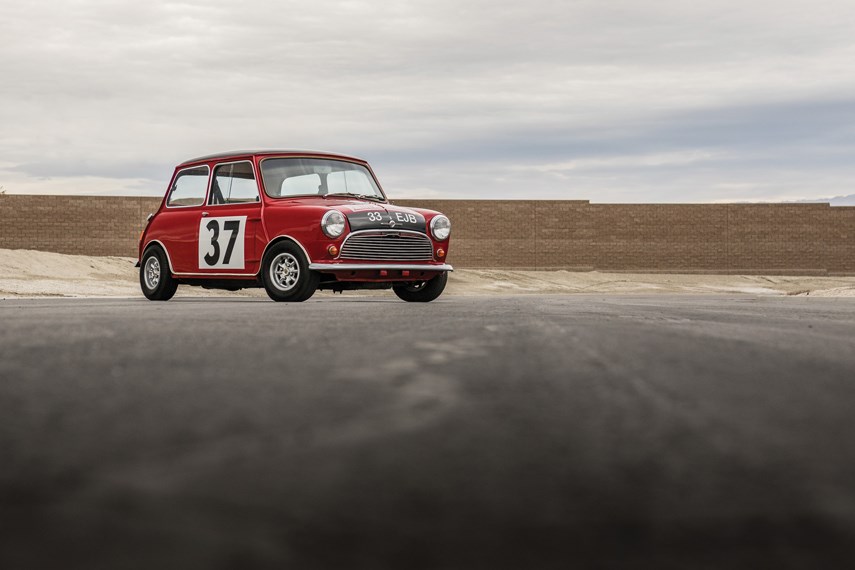Last week I was in California, surrounded by dozens of cars from BMW’s entire range.
There were M5s and M2s, the convertible EV i8, crossovers aplenty, the new inline-six-powered BMW 340i, and even a no-cameras room where you could go have a peek at the new M8. If you like modern BMWs, it was a veritable buffet of things to drive.
And, if you know anything about BMW as a modern company, you’ll also know that their sphere of influence has expanded to include Rolls-Royce. Standing ready for sampling was the latest Rolls to join the well-heeled herd, the gargantuan Cullinan SUV. Massive, impeccably crafted, and powered by a whisper-quiet V-12, the Cullinan promised the very latest in modern luxury, right there for the taking.
Naturally, I couldn’t be bothered with any of that nonsense, and headed straight for a half-century-old economy car with more than a passing resemblance to a ladybug.
Mini! Remember when these things were, y’know, actually Mini? The current range, produced by BMW for the past couple of decades, has grown ever larger thanks to consumer demand for technology, and regulatory demand that people should have more crash protection than you get from your average Ziploc container.
But from approximately 1959 through until about 1979, Canadians could buy a truly revolutionary little car that was both practical and entertaining. Developed as a response to spiking fuel prices and austere times in the U.K., the Mini was and remains an absolute gem of a machine.
Yes, there are other successful “people’s cars” like the VW Beetle, Citroen 2CV, and Fiat 500. But consider that the average Canadian currently drives something like a Honda Civic, and compare that to the original Mini. Front-wheel drive? Check. Transversely mounted small-displacement engine with water cooling? Check. Steering wheel like a school bus? Well, no.

Because the Mini was built right up until 2000 in some markets, almost everyone has some kind of Mini memory. Mine is of my maternal grandmother’s beloved cherry-red example. I distinctly remember riding around Enniskillen town, dodging potholes and receiving the latest information on every single person we passed. What I don’t recall is dear old Gran spending a great deal of time looking through the windshield rather than the side windows.
You can’t be from Northern Ireland and not like Minis at least a little bit. In fact, Mini as a brand owes much of its success to the wee province of Ulster. (Sidebar: everything in Norn Iron is referred to as wee. Will ye have a wee drop of tea? How was your wee boy’s 48th birthday party? Is that the wee elephant that escaped the zoo last Tuesday? And so on.)
Ulster has two major motorsport heroes: Joey Dunlop and Paddy Hopkirk. I’ll have to do something on Dunlop one of these days (possibly the only motorcyclist to win the Isle of Man TT on a bike that had been shipwrecked), but yer maun Hopkirk is the reason Mini is considered a performance brand.
Fifty-five years ago today, Hopkirk piloted his Mk 1 Mini Cooper S to victory at the Monte Carlo rally, battling through snow and ice and Scandinavian drivers to do so. Short, burly, and dark-haired, the Trinity College-educated Hopkirk was the epitome of an Ulsterman, including a certain stubborn hard-headedness your humble author has not quite outgrown.

This red 1965 Mk 1 Cooper has the same registration number as Hopkirk’s machine, and many of the same upgrades. It only makes around 70 horsepower or so, but by Mini standards, that’s a bit of a hot rod. I twist the key, keep blipping the throttle so the cold engine doesn’t stall out, and head out, looking for some corners.
I’ve driven a few Minis over the years, principally Japanese-market ones. Japan is, weirdly, absolutely crazy about Mini, and has a whole subculture dedicated to the original. Towards the end, you could even get a classic Mini with air-conditioning and an automatic transmission over there.
Almost every single Mini I’ve driven has been modified in some way, as that’s part of the charm of the breed. You’re never supposed to leave them alone, but rather dress them up or bolt on some upgrades. You’ll probably be under the hood anyway – it’s a British Leyland product after all.
This one, however, was just as the factory intended. Apart from smoking like Hopkirk did in the 1960s, it fairly zipped along, cornering flat and generally feeling like it was up to no good. It was absolutely wonderful and, predictably, now I want one. Or possibly three.
Pity BMW. They have rules to follow, safety standards to keep, and infotainment to cram in somehow. There’s really no way a modern Mini can exist with quite that same spirit. The best you can hope for is a Volkswagen GTI with a fake cockney accent.
However, perhaps all is not lost. There’s an electrified Mini on the way, and with the way batteries can be packed away into floorboards, perhaps we’ll see some sort of return of that Mini spirit. Look at the BMW i3 – that’s not too far off from the original design brief of sporty urban runabout.
In the meantime, if you’ve got a classic Mini, then lucky you. And if you see one running around town, maybe ask if you can get a lift somewhere. Just check, before you set off, that the driver doesn’t appear to be from Northern Ireland. If they are, then cinch your seatbelt extra tight. You might be in for a wee jaunt.
Brendan McAleer is a freelance writer and automotive enthusiast. If you have a suggestion for a column, or would be interested in having your car club featured, please contact him at mcaleeronwheels@gmail.com. Follow Brendan on Twitter: @brendan_mcaleer.



